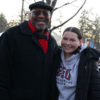ESU Students Discover Value Of Communication Through Music and Dance

Posted by: admin on September 28, 2012, No Comments
Last summer, ESU’s Dr. Margaret Ball and four of her undergraduate students, got together with their counterparts at Shanghai Normal University and, over a three-week visit, built a bridge. Not the sort made of concrete and steel, but a bridge built of understanding and paved in trust and openness. Its main function is to connect two cultures, a meeting of peoples that both might learn, each from the other. It’s a bridge of communication; and this particular bridge hums with music and dance, the language of theatre.
Dr. Ball, an associate professor of theatre who has been with ESU for twelve years, led a beginning workshop in performing American Musical Theatre at the Chinese university. She and assisting students, Brandon Cabrera, Katie Dembesky, Karen Guilliams and Michael Lloret, taught their students the song, Somewhere Over the Rainbow. “The Chinese had heard the song,” says Ball, “but our workshop focused on diction and translation. Then we had them sing it individually. And then we asked them to make a gesture, as they sang, that meant what the words meant; so we could all be sure that they did understand.”
Shanghai Normal University is one of ESU’s two sister schools in China, and one of five global partners. For the People’s Republic of China, i.e., the government, this bridge-building is the essential reason for exchange between our countries. “[They] wanted our students to intermingle with their students,” Ball explains, “because they will be working with the West and have to get to know us.”
Students in Chinese universities work hard to get in, Ball says. She estimates that only about a third of students do. But that scary stat no doubt fuels at least some of the students’ drive.
“[Our Chinese students] had incredible discipline,” Ball says. “For them, classes are pretty much about listening, and then giving back to the professor. They memorize it and, say, it’s chemistry they’re being tested on – they can be asked anything in a chemistry book, anything. So, of course, they need to know the whole thing.”
“It was good for our students to see their discipline,” Ball continues. “And how well they work as an ensemble, how they support each other.” But she also notes the reverse, of how great it is that the Chinese had a chance to observe their new-found American friends. “Our students work well as individuals; the Chinese work more collectively,” Ball says. “There are good things in both approaches. And putting them together we got something even better.”
Pictured from left: Katie Dembesky of Dixon City, Pa.; Brandon Cabrera of East Stroudsburg, Pa.; Karen Guilliams of Cape May Courthouse, N.J.; Dr. Margaret Ball of East Stroudsburg; and, Michael Lloret of East Stroudsburg.
Search
Recent Posts
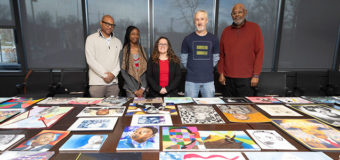
Julianna and Wayne Bolt Art Contest Winners Selected for the 29th Annual Martin Luther King Jr. Celebration
December 10, 2025 - Read more
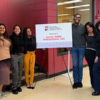
ESU Hosts 8th Annual Dr. Barbara G. Collins Social Work Professional Development Day
December 4, 2025 - Read more
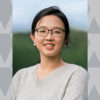
ESU Professor Elected to American Society of Plant Biologists Steering Committee
November 25, 2025 - Read more
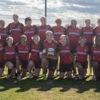
ESU Women’s Rugby Club Team Headed Back to Division III National Championships
November 25, 2025 - Read more
